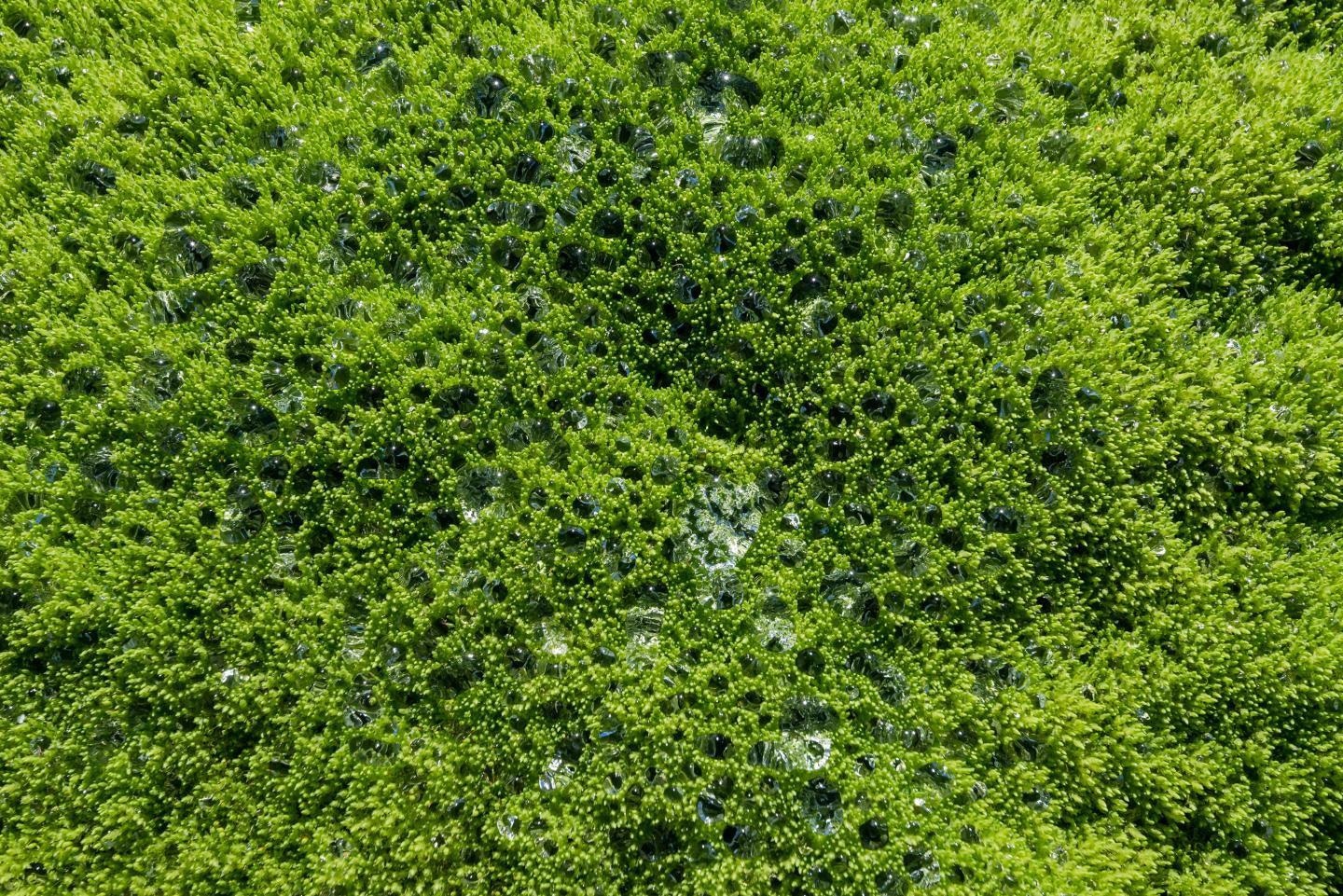According to a new study by researchers from University College London (UCL) and Yale University, the arrival of plants on Earth around 400 million years ago may have altered the way the planet regulates its climate naturally.
 Water collects on mosses. The first land plants were thought to be non-vascular, like mosses. Image Credit: Katmai Preserve NPS Photo/Russ Taylor.
Water collects on mosses. The first land plants were thought to be non-vascular, like mosses. Image Credit: Katmai Preserve NPS Photo/Russ Taylor.
The carbon cycle through which the carbon moves between oceans, rocks, living organisms and the air serves as Earth’s natural thermostat by controlling the temperature over a long time.
Samples obtained from rocks from the last three billion years were examined by the researchers. They discovered evidence for a considerable change in the way the carbon cycle functioned around 400 million years ago when plant colonization had begun. The study was published in the journal Nature.
The scientists marked a change in the chemistry of seawater recorded in the rocks. This denotes a significant shift in the global formation of clay, known as the “clay mineral factory,” from the oceans to the land.
Clay formation in the ocean (reverse weathering) results in the release of carbon dioxide into the atmosphere, while clay found on land is a byproduct of chemical weathering that eliminates carbon dioxide from the air. Therefore, such a reduction in the atmospheric carbon leads to a seesawing climate and a cooler planet, with alternating warmer periods and ice ages.
The scientists state that the change was a result of the spread of land plants keeping clays and soils on land, thereby halting the carbon from being washed into the ocean. It was also due to the growth of marine life that uses silicon for their skeletons and cell walls, like single-celled algae, sponges and radiolarians (a group of protozoa), resulting in a drop in silicon in the seawater required for clay formation.
Our study suggests that the carbon cycle operated in a fundamentally different way for most of Earth’s history compared to the present day. The shift, which occurred gradually between 400 to 500 million years ago, appears to be linked to two major biological innovations at the time: the spread of plants on land and the growth of marine organisms that extract silicon from water to create their skeletons and cells walls.
Dr. Philip Pogge von Strandmann, Study Senior Author, Earth Sciences, University College London
“Before this change, atmospheric carbon dioxide remained high, leading to a stable, greenhouse climate. Since then, our climate has bounced back and forth between ice ages and warmer periods. This kind of change promotes evolution and during this period the evolution of complex life accelerated, with land-based animals forming for the first time,” added Dr. von Strandmann.
“A less carbon-rich atmosphere is also more sensitive to change, allowing humans to influence the climate more easily through the burning of fossil fuels,” stated Dr. von Strandmann.
By measuring lithium isotopes in rocks spanning most of Earth's history, we aimed to investigate if anything had changed in the functioning of the carbon cycle over a large time scale. We found that it had, and this change appears to be linked to the growth of plant life on land and silicon-using animal life in the sea.
Boriana Kalderon-Asael, Study First Author and PhD Student, Yale University
The scientists quantified lithium isotopes in 600 samples of rocks obtained from several different locations across the globe. Lithium appears as two naturally occurring stable isotopes: one with three protons and three neutrons, and the other one with three protons and four neutrons.
The slow formation of clay on land strongly favors lithium-6, thereby leaving surrounding water enriched with the other, heavier isotope, lithium-7. Mass spectroscopy analysis of the samples enabled researchers to identify an increase in the level of lithium isotope-7 in seawater recorded in the rock that occurred between 400 and 500 million years ago.
The results denote a significant shift in clay production on the Earth, which coincided with the spread of plants on land and the emergence of silicon-using marine life.
Clay forms on land as a residue of chemical weathering, which is a main long-term process via which carbon dioxide is eliminated from the air. This process takes place when carbon in the atmosphere combines with water to form a weak acid called carbonic acid, which falls on the ground as rain and dissolves rocks. This emits ions, including calcium ions, that flow into the ocean.
Finally, carbon gets confined within the rocks on the ocean floor. On the other hand, the carbon drawdown by plant photosynthesis is nullified as soon as the plants get decayed, and it hardly affects carbon dioxide levels on timescales longer than a few hundred years.
Clay formation in the ocean forces carbon to remain in the water and finally be emitted into the air as part of the constant exchange of carbon that happens when air meets water.
Journal Reference:
Kalderon-Asael, B., et al. (2021) A lithium-isotope perspective on the evolution of carbon and silicon cycles. Nature. doi.org/10.1038/s41586-021-03612-1.
Source: https://www.ucl.ac.uk/